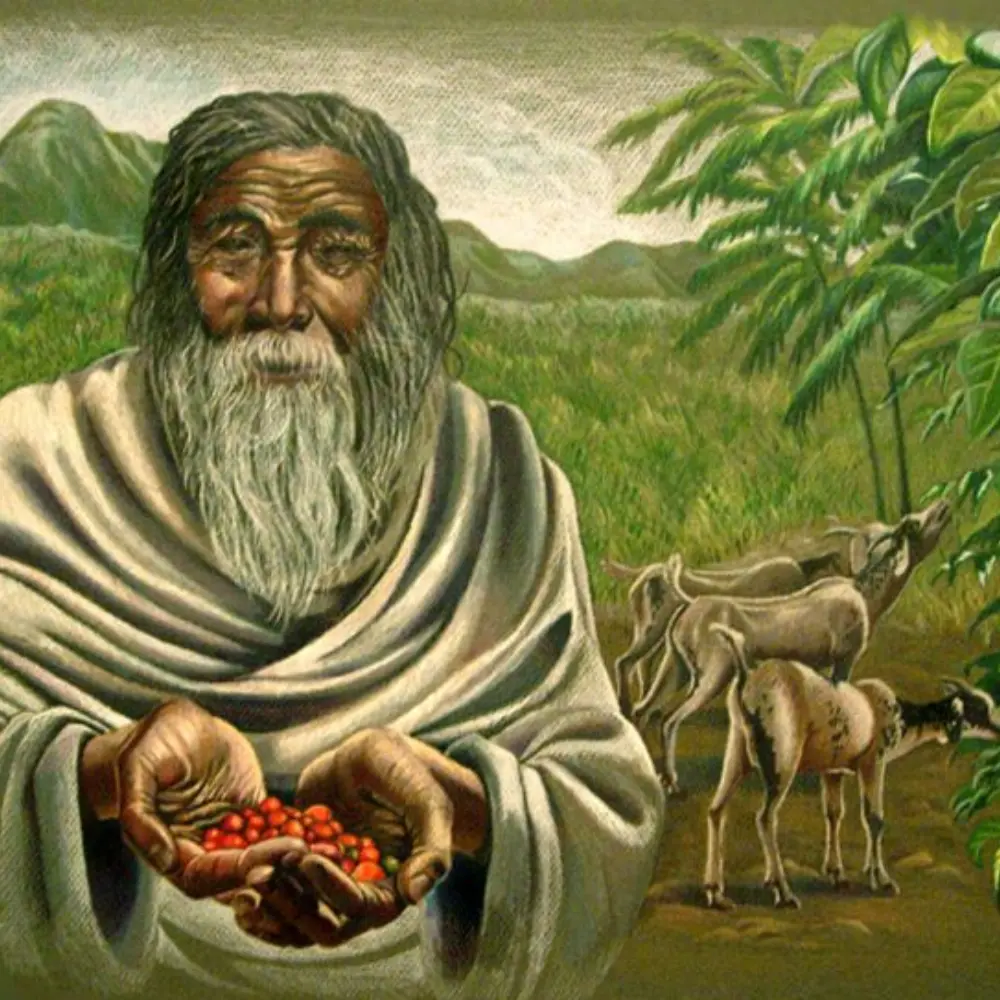Welcome to our comprehensive guide on the art and science of coffee brewing, where we dive deep into understanding the pivotal role of temperature. If you’ve ever wondered why your homemade brew doesn’t quite match up to your favorite café’s, the answer could very well lie in the coffee temperature.
Many coffee enthusiasts overlook the importance of temperature, focusing more on the type of coffee beans, the grind, and the brewing method. However, the temperature of your coffee water can significantly impact the quality and flavor of your final brew. It’s not just about hot or cold, but about understanding the subtle variations that can extract the perfect balance of flavors from your coffee beans.
In this guide, we’re going to explore everything you need to know about coffee water temperature. We’ll look at the ideal temperatures for different types of brews, how temperature affects the taste, and how you can control the temperature to make the perfect cup of coffee every time. So, whether you’re a seasoned barista or a home brewer, there’s something here for you. Get ready to take your love for coffee to a whole new level as we plunge into the world of coffee brewing temperature.
Coffee Brewing Temperature: Key Takeaway
- The Science of Brewing: Coffee brewing is a delicate interplay between coffee beans, water, and temperature, with each aspect playing a crucial role in the final taste of your brew.
- Ideal Brewing Temperatures: Depending on the coffee roast and brewing method, the ideal brewing temperature can range from 195-205°F (91-96°C), with lighter roasts typically requiring higher temperatures and darker roasts performing well at slightly lower temperatures.
- Taste and Temperature: The temperature at which you brew your coffee significantly affects its taste. Overheating can lead to over-extraction and a bitter taste, while underheating can result in under-extraction, leading to a sour or weak brew.
- Controlling Brewing Temperature: Having the right tools, such as a quality thermometer and a kettle with temperature control, can help maintain a consistent temperature throughout the brewing process. Preheating your equipment can also aid in temperature control.
- Common Mistakes: Some common mistakes to avoid include using boiling water for brewing, not considering the different temperature requirements for various roasts and brewing methods, and not maintaining a consistent temperature throughout the brewing process.
The Science of Coffee Brewing
The journey of a coffee bean from a cherry on a plant to a delicious cup of joe is a scientific process that can be fine-tuned and optimized at every stage. One of the most crucial components of this process is the coffee brewing temperature, which can greatly influence the quality and taste of your coffee.
Understanding the Coffee Bean

Before we delve into the intricacies of coffee temperature, it’s essential to grasp a basic understanding of the coffee bean itself. Coffee beans are seeds of the Coffea plant and are housed within a red or purple fruit often referred to as a “cherry.” (1) Inside each bean are hundreds of flavor compounds and oils that contribute to the taste and aroma of your coffee. The roasting process activates these compounds, but it’s the brewing process, and specifically the coffee brewing temperature, that extracts them into your cup. By adjusting the temperature, you can control which flavors are highlighted and which ones are subdued, allowing you to customize your brew to your taste.
The Chemistry of Brewing
Brewing coffee is essentially a chemistry experiment. When hot water interacts with the coffee grounds, it dissolves some of the compounds in the coffee, creating a solution that we know and love as coffee. The water acts as a solvent, and the coffee grounds are the solute. However, not all compounds dissolve at the same rate or the same temperature.
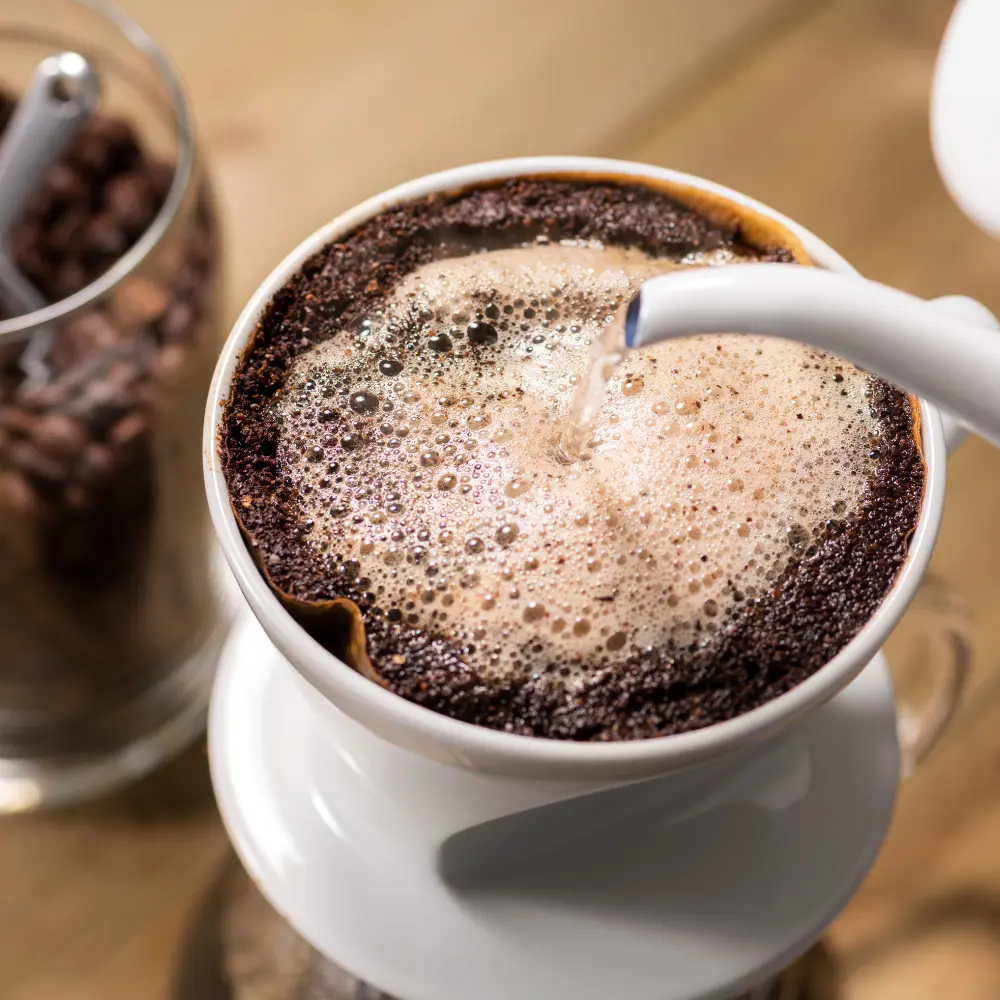
Certain desirable flavors are extracted at lower temperatures, while others need a higher temperature. Brewing your coffee at the right temperature ensures that the right balance of flavors is extracted, leading to a well-rounded cup. Too high a coffee brewing temperature, and you could end up extracting too many bitter compounds, leading to an unpleasant taste. Too low, and you might not extract enough, resulting in a weak, under-extracted cup.
The Physics of Temperature and Time
Temperature and time are closely intertwined in the brewing process. The general rule of thumb is: the higher the temperature, the faster the extraction, and vice versa. This means that if you’re brewing your coffee with hot water, it will extract the flavors from the coffee grounds more quickly than if you were using cooler water.
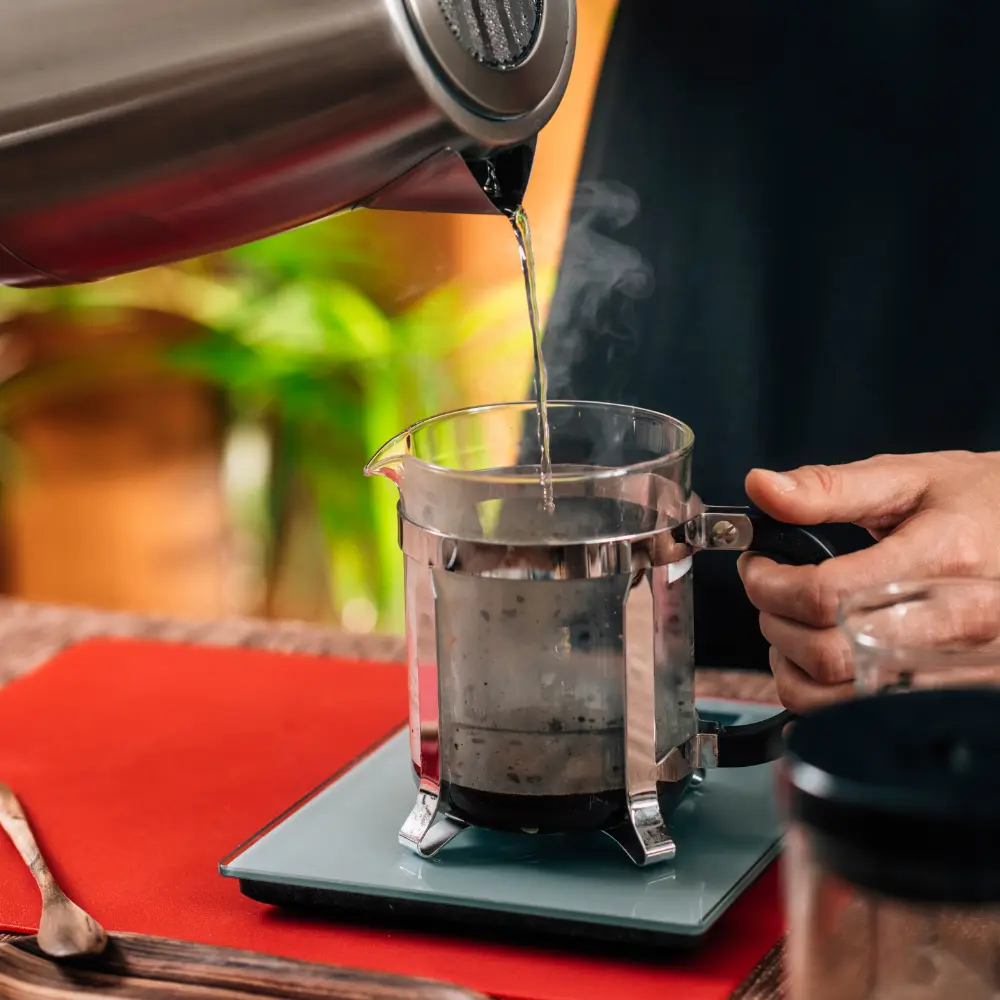
However, this doesn’t mean that hotter is always better. As we’ve learned, different compounds dissolve at different temperatures. So, it’s about finding the sweet spot where you’re extracting the maximum amount of desirable flavors in the minimum amount of time. This balance is where the art and science of coffee brewing meet. By understanding and manipulating coffee brewing temperature, you can significantly enhance the quality of your brew.
The Ideal Coffee Brewing Temperatures
Achieving the perfect brew is as much an art as it is a science. The temperature of coffee during brewing can dramatically impact the final product’s taste, aroma, and overall experience. Here, we delve into the ideal coffee temperatures for different roasts and brewing methods.
Light Roast vs. Dark Roast: Temperature Differences
Light and dark roast coffees have different characteristics, and these differences extend to the ideal brewing temperatures as well. The Light roasts, known for their vibrant acidity and complex flavor profiles, often benefit from slightly higher brewing temperatures, typically around 203-206°F (95-97°C). The higher coffee temperature allows for the extraction of the delicate, nuanced flavors inherent in these roasts.
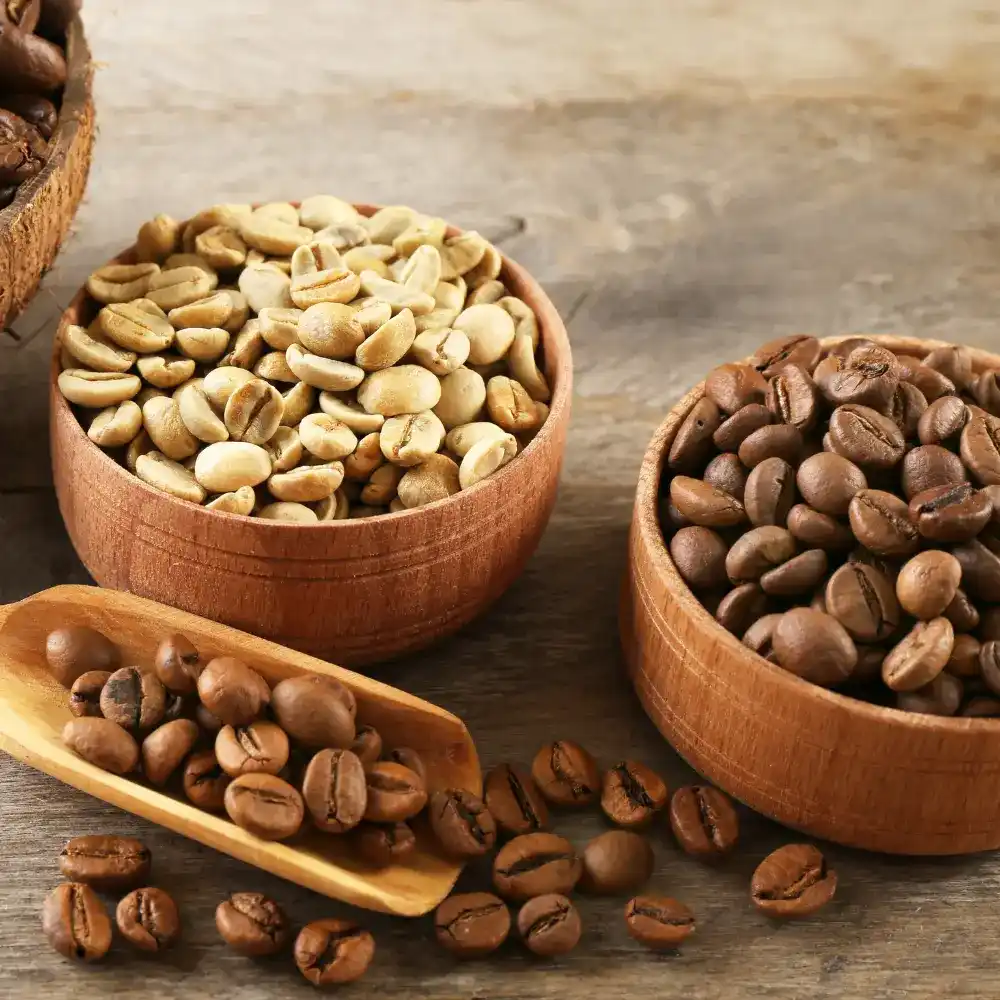
Dark roasts, on the other hand, are characterized by their bold, robust flavors and lower acidity. They have already been roasted at high temperatures, which means they generally require lower brewing temperatures, around 194-199°F (90-93°C), to avoid over-extraction and to maintain their rich, full-bodied profile.
The Perfect Espresso: Temperature Guidelines
Brewing espresso requires a keen understanding of temperature control. A standard guideline for brewing espresso is to maintain the temperature of coffee at approximately 195-205°F (91-96°C). This range allows for optimal extraction of the coffee’s flavors, producing a well-balanced shot.

However, keep in mind that espresso machines use pressure in addition to temperature to extract flavors, and different machines may have different optimal temperature ranges. Your taste preferences should also guide you: if your espresso tastes too bitter, try lowering the temperature slightly; if it’s too sour, a higher temperature might be needed.
Cold Brew: Playing with Temperature Extremes
Cold brew coffee, as the name suggests, involves brewing coffee at significantly lower temperatures. Rather than using hot water to quickly extract the flavors, cold brew utilizes time and patience. The coffee grounds are steeped in cold water, usually at room temperature or refrigerated, for an extended period, typically 12-24 hours.

This slow extraction process results in a coffee with lower acidity and a naturally sweet, smooth flavor. Since there’s no heat involved, the temperature of coffee during the brewing process is essentially whatever the ambient temperature is, though most people prefer to brew in the fridge, at around 8°C (46°F).
| Preview | Product | |
|---|---|---|

| OXO Good Grips 32 Ounce Cold Brew Coffee Maker,Black | See on Amazon |

| Instant Cold Brew Electric Coffee Maker, From the Makers of Instant Pot, Customize Your Brew… | See on Amazon |
Pour-Over Brewing: Finding the Balance
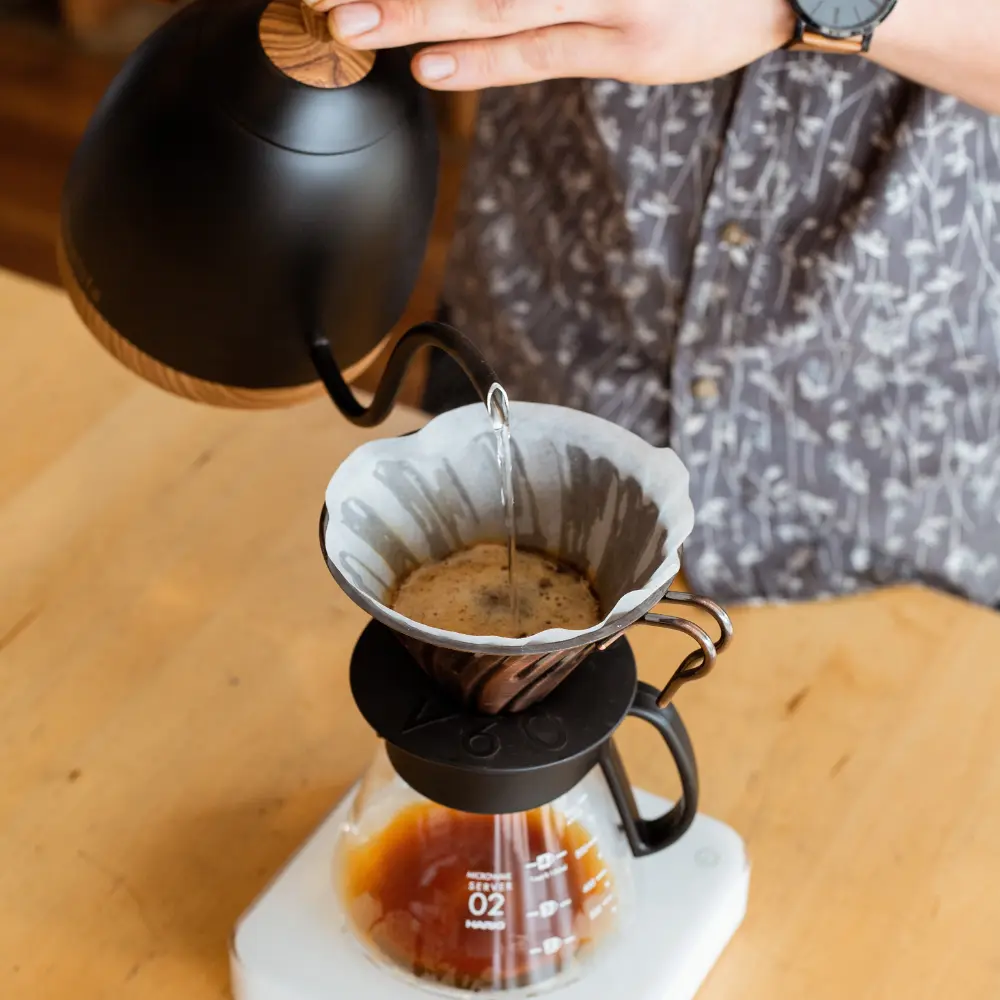
Pour-over brewing is an art that requires balance and precision, especially when it comes to the pour-over coffee temperature. The generally accepted range for this method is between 195-205°F (91-96°C). This temperature range allows for a balanced extraction of flavors, ensuring that your coffee is neither too bitter (a result of over-extraction) nor too sour (a sign of under-extraction). It’s also important to pour the water in a steady and controlled manner to maintain a consistent temperature throughout the brewing process.
The French Press Method: Heat Retention is Key
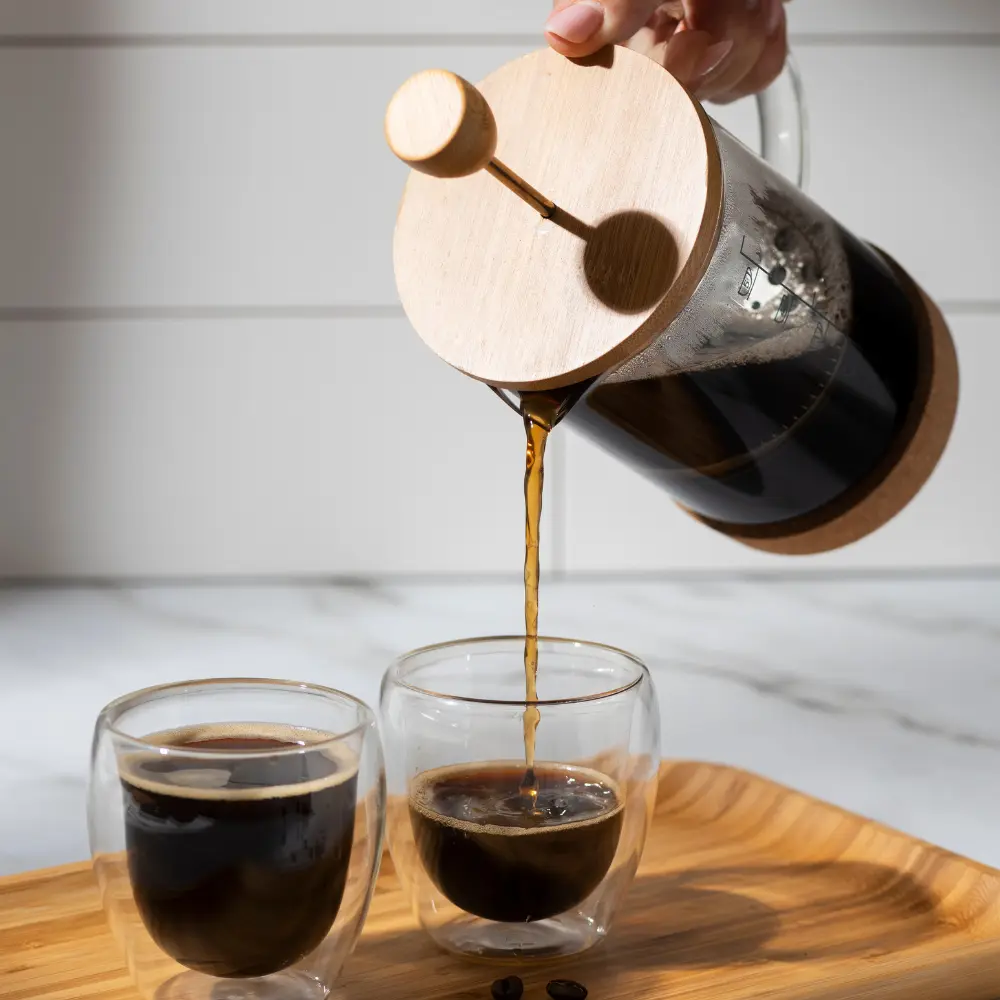
The French Press brewing method relies heavily on heat retention. Because the coffee grounds steep in the water for an extended period (usually around 4 minutes), maintaining the correct French press coffee temperature is crucial. Typically, this is in the range of 199-205°F (93-96°C). To aid heat retention, it’s recommended to preheat the French Press with hot water before adding your coffee grounds and brewing water. This ensures the temperature remains consistent throughout the brewing process, resulting in a well-extracted and flavorful brew.
The AeroPress Technique: Quick Brew, Precise Temperature

The AeroPress coffee maker is known for its quick brew time and versatile brewing options. Given the fast brewing time, the recommended water temperature is slightly lower than other methods, usually between 175-185°F (80-85°C). This lower temperature, combined with the rapid brewing, allows for a well-rounded extraction, producing a cup that’s rich in flavor yet low in bitterness. It’s important to note that AeroPress’s versatility allows for experimentation, so feel free to adjust the temperature slightly to find what works best for you.
Turkish Coffee: The Role of Heat

Turkish coffee is unique in its preparation, requiring coffee to be ground to a fine powder and then boiled with water and sugar in a special pot called a cezve. Heat plays a significant role in this method, as the coffee comes to a boil several times during brewing. The exact temperature isn’t usually measured, but it’s crucial to watch the coffee carefully as it brews to avoid it boiling over and to ensure it froths up properly. The result is a thick, robust, and intensely flavored coffee.
The Moka Pot Method: Handling High Temperatures
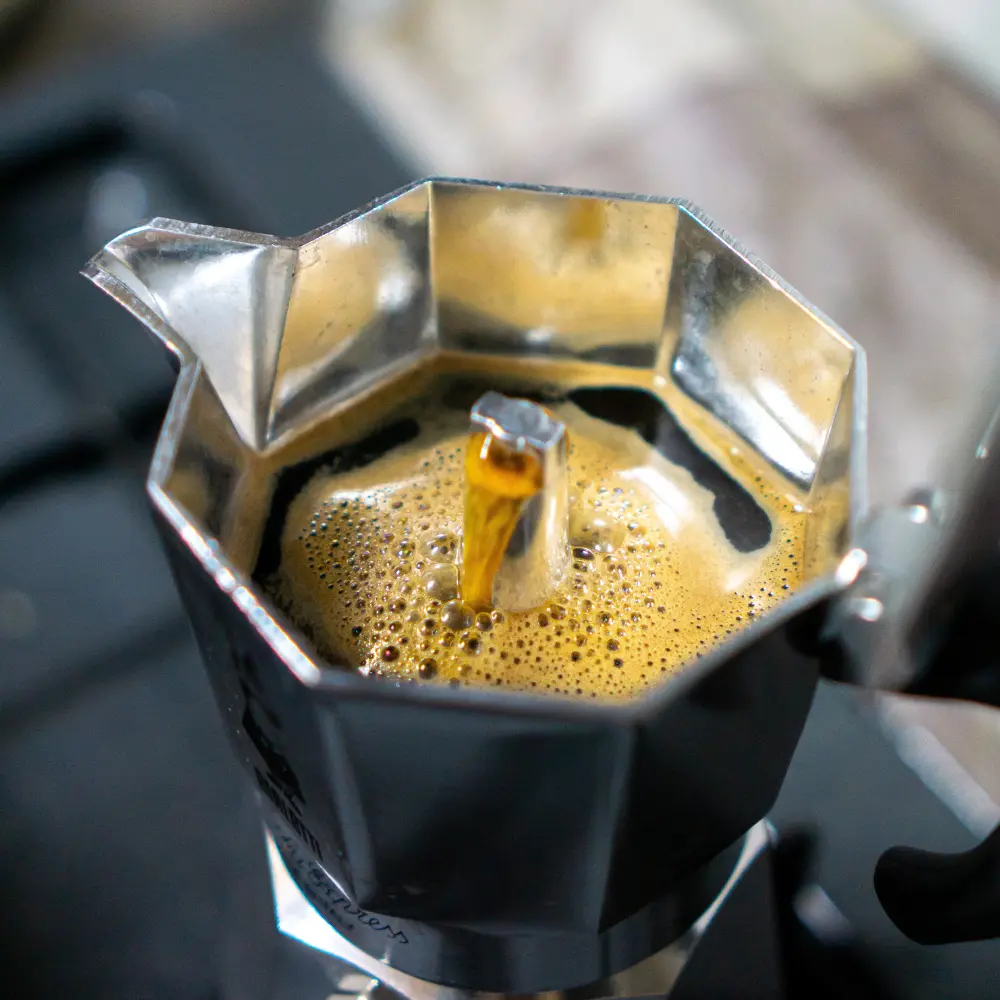
Moka Pot brewing is a method that involves passing boiling water pressurized by steam through coffee grounds. Because of the method’s design, the water temperature can exceed the typically recommended brewing range and get quite close to boiling. While this is part of the Moka Pot’s character and contributes to its robust and bold flavor, care should be taken to prevent the coffee from overheating, which can introduce unwanted bitterness. One technique is to fill the pot with preheated water, which shortens the time the coffee spends on the stove, reducing the risk of overheating.
Remember, the right coffee temperature can make or break your brewing experience. Experiment within these guidelines to find what works best for your taste buds and enjoy the journey to your perfect cup.
How Brewing Temperature Affects Taste
Understanding the effects of brewing temperature on taste is a crucial aspect of perfecting your coffee brew. The best temperature for coffee can vary depending on the desired flavor profile and the specific coffee variety. Let’s explore how coffee brew temperature impacts various aspects of your cup.
Acidity, Bitterness, and Temperature
The relationship between acidity, bitterness, and temperature is a complex dance that shapes your coffee’s taste profile. Generally, brewing at a higher temperature extracts more acids, but it also extracts more bitter compounds. On the other hand, lower temperatures result in less extraction, which can produce a sweeter, but possibly weaker, cup of coffee.
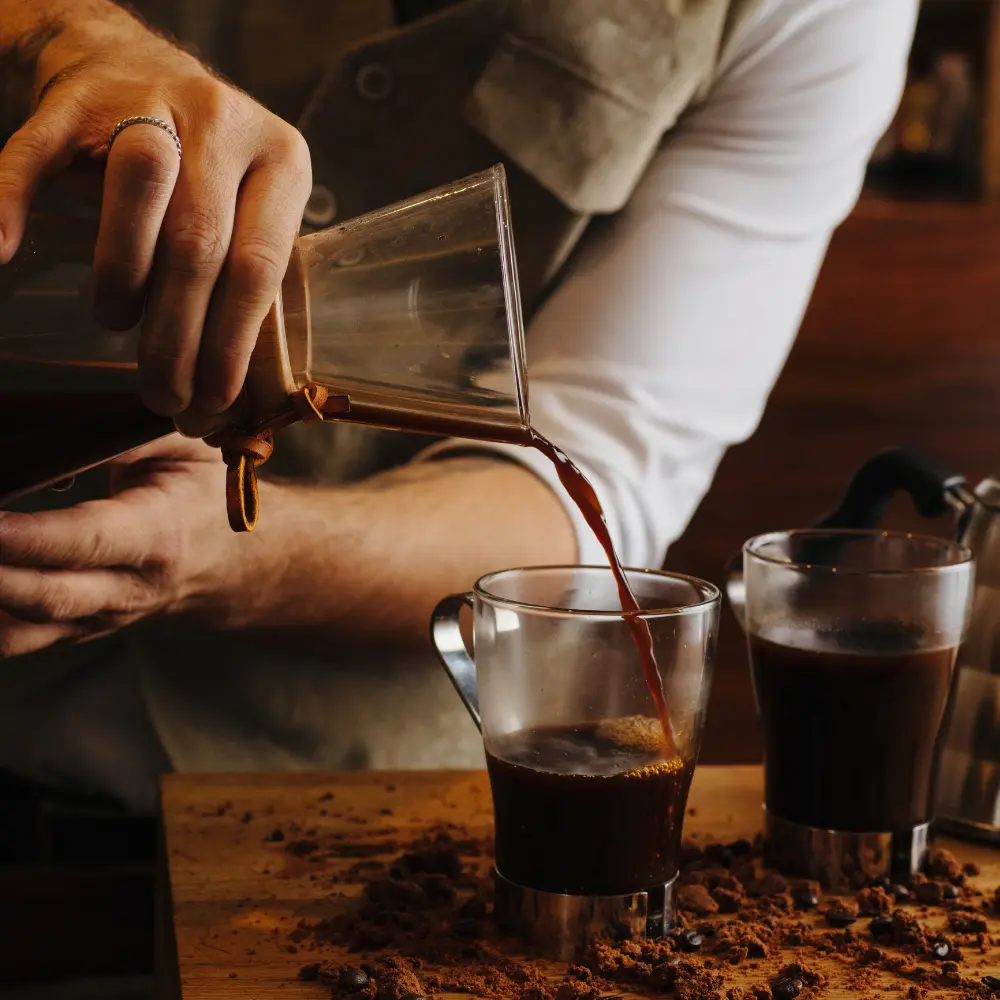
For instance, the ideal coffee temperature for light roasts, which naturally have a higher acidity, is slightly higher to balance the acidity with the sweetness. Conversely, darker roasts, which are less acidic and more bitter, benefit from a lower brewing temperature to avoid over-extraction of bitterness.
Maximizing Aromas with Heat
The tantalizing aroma of coffee is a big part of its allure, and the coffee brew temperature can significantly influence this aspect. The aromatic compounds in coffee are volatile, meaning they can evaporate and escape the brew. Brewing at the right temperature ensures that these aromas are extracted and captured in the liquid rather than being lost to the air.
Hotter water can extract more of these aromatic compounds, but if the water is too hot, it can cause over-extraction and lead to a bitter and less aromatic cup. The generally accepted best temperature for coffee to maximize aroma is between 195-205°F (91-96°C).
Experimenting with Flavors: Your Personal Taste Profile
The beauty of brewing your coffee is the ability to experiment and tailor your brew to your taste profile. While there are guidelines for the ideal coffee temperature, they should serve as a starting point for your exploration.
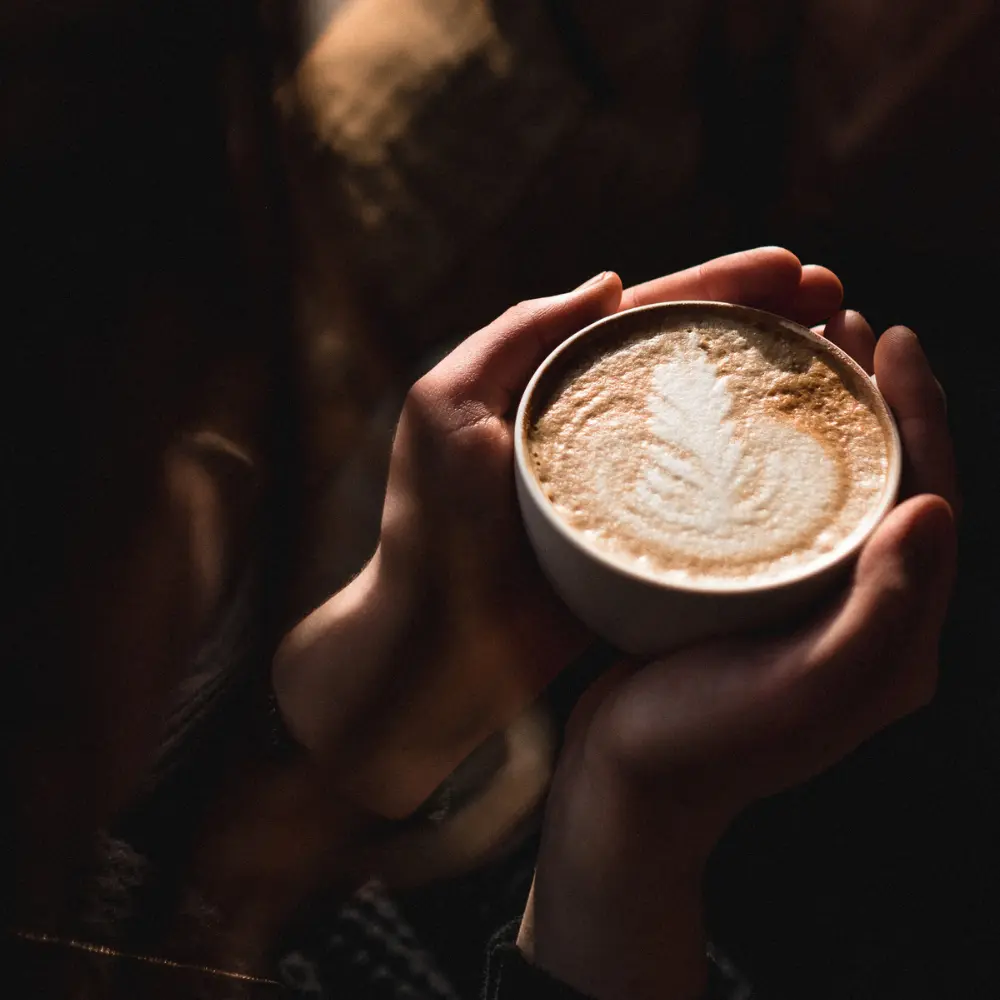
You might find that you prefer a slightly cooler brew for your morning espresso, or perhaps a slightly hotter brew brings out the fruity notes in your favorite light roast. Don’t be afraid to play around with temperatures within the recommended ranges. Through trial and error, you’ll find the best temperature for coffee that suits your palate and enhances your coffee experience.
Techniques for Controlling Brewing Temperature
Brewing coffee is a meticulous process that can be influenced by several variables, one of the most crucial being the brewing temperature. So how do you ensure that your coffee temperature is just right? Here are some techniques and tools to help you keep your temperature for coffee consistent and ideal.
Tools for Monitoring Temperature
To have control over your coffee brewing temperature, you first need to be able to measure it accurately. This is where thermometers come in. There are various types of thermometers available for coffee brewing, from simple analog ones to more advanced digital ones with features like instant reading and alerts for your desired temperature.
Another tool that can help is a variable temperature kettle. These kettles allow you to set a specific temperature for your water, ensuring it’s always heated to your desired coffee temperature.
For espresso lovers, investing in an espresso machine with a PID (Proportional-Integral-Derivative) controller can give you precise control over the brewing temperature. PID controllers regulate the temperature in your espresso machine, keeping it consistent and accurate to a degree.
The Art of Preheating
Preheating is a simple yet effective technique to control your coffee temperature. This involves heating your coffee equipment, like the brewer and cup, before starting the brewing process.
Why is this necessary? If you pour hot water into a cold brewer or cup, it will cool down significantly, which could impact the brewing temperature. By preheating your equipment, you’re helping maintain a consistent temperature for coffee brewing, ensuring optimal extraction.
Temperature Control in Different Brewing Methods
Different brewing methods might require different approaches to temperature control. For example, in a French press, you’re in control of the water temperature, so using a good thermometer and a variable temperature kettle can ensure you hit the right temperature every time.
With an espresso machine, ensuring the machine is thoroughly warmed up, typically by pulling a few blank shots, can ensure the water temperature is consistent throughout the brewing process.
For cold brew, maintaining a consistent temperature is less about heating and more about making sure your brew stays cool during the long steeping process. This typically involves brewing in a cool place or the fridge.
Mastering the control of coffee brewing temperature takes time and practice, but with the right tools and techniques, you can brew a perfect cup that suits your taste, every time.
Mistakes to Avoid with Coffee Brewing Temperature
The pursuit of the perfect coffee brew is fraught with potential pitfalls, many of which center around the manipulation of coffee temperature. Recognizing these common mistakes can save you from a failed coffee experience and move you closer to brewing excellence.
Common Misconceptions about Temperature
One of the most common misconceptions is that boiling water is ideal for brewing coffee. While it’s true that you need hot water to effectively extract coffee’s flavors, using boiling water (212°F/100°C) can over-extract the coffee, leading to a bitter and unpalatable brew. A more suitable coffee water temperature range lies between 195-205°F (91-96°C).
Another misconception is that the same temperature should be used for all types of coffee. Different roasts and brewing methods can require different temperatures, as we’ve discussed earlier. Understanding these differences is crucial to brewing a cup that highlights the unique characteristics of each coffee variety.
Overheating and Underheating: The Consequences
Getting the coffee water temperature right is a delicate balance. As mentioned before, overheating the water can lead to over-extraction, where too many solids are dissolved into the water, resulting in a bitter and harsh cup of coffee. On the other hand, underheating can lead to under-extraction, where not enough flavors are extracted, leaving you with a weak and sour brew.
Remember, the ideal coffee temperature for brewing most coffee lies between 195-205°F (91-96°C). However, these are not strict rules, and personal taste preferences should also guide your brewing process.
Avoiding Inconsistencies in Coffee Brewing Temperature
Inconsistency in coffee temperature during brewing can lead to a cup that’s both over-extracted and under-extracted – essentially, a cup that’s confused about its identity. To avoid this, it’s important to maintain a steady temperature throughout the brewing process.

For manual brewing methods, this might involve preheating your equipment, using a kettle with temperature control, or pouring the water in stages to maintain the temperature. For automatic methods like drip machines or espresso machines, look for machines with good temperature stability or PID controllers to ensure a consistent temperature.
Avoiding these common mistakes will greatly improve your coffee brewing skills and help you get closer to achieving the perfect brew. Always remember that while guidelines are helpful, the best coffee is the one that tastes right to you.
Conclusion: Embracing the Influence of Coffee Water Temperature in Your Brewing Journey
Mastering the art of coffee brewing is a journey, and understanding the role of coffee temperature is a significant step on that path. We’ve navigated through the science of brewing, the impact of temperature on taste, and the nuances of different brewing methods and coffee roasts.
Remember, the perfect cup of coffee is not just about hitting the right numbers; it’s also about exploration, experimentation, and ultimately, personal preference. So don’t be afraid to play around with your coffee temperature and brewing process, because the best coffee is the one that tastes right to you.
Embrace this knowledge about coffee temperature, apply it, and let every brew be a stepping stone toward your ideal cup of coffee. Whether you’re a coffee connoisseur or a casual drinker, understanding and controlling your coffee brewing temperature can elevate your coffee experience, one brew at a time.
FAQ
Does the brewing temperature affect the coffee taste?
Brewing temperature significantly affects coffee taste. Overheating can lead to over-extraction, resulting in a bitter taste, while underheating can cause under-extraction, giving a sour or weak brew.
How can I control the brewing temperature at home?
To control the brewing temperature at home, use a good-quality thermometer and a kettle with temperature control. Preheating your equipment and maintaining a consistent temperature throughout the brewing process also helps.
What are the ideal brewing temperatures for lighter roasts and dark roasts?
Light roasts often require higher temperatures (closer to 205°F/96°C) for proper extraction, while dark roasts perform well at slightly lower temperatures (closer to 195°F/91°C).
What are the common mistakes in coffee brewing temperature?
Common mistakes regarding coffee brewing temperature include using boiling water, not considering the different temperature requirements for various roasts and brewing methods, and not maintaining a consistent temperature throughout the brewing process.

























